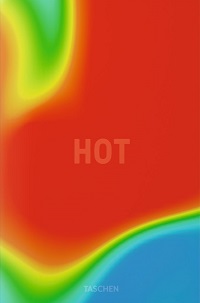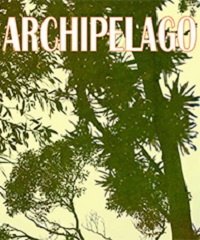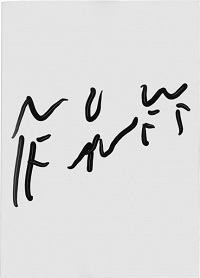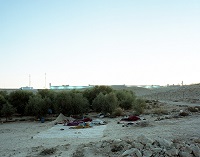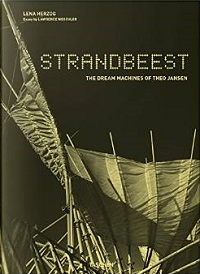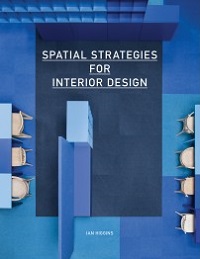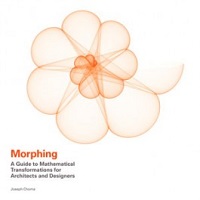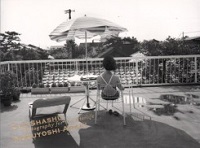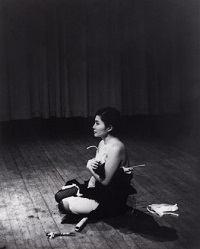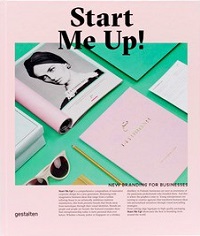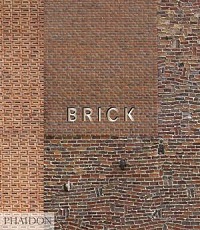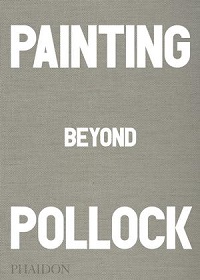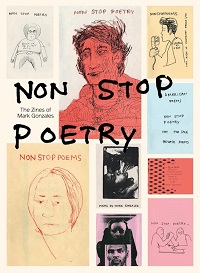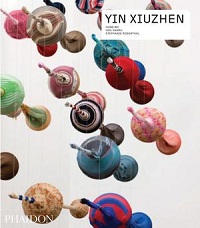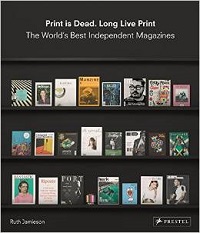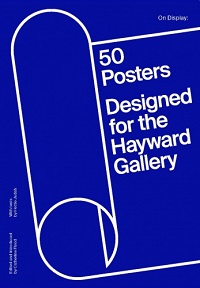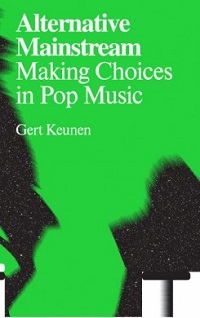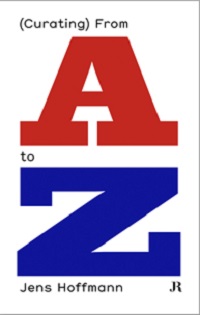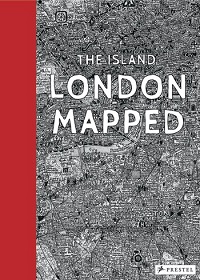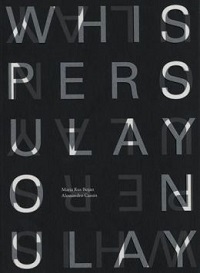Click on the image for more information, and to purchase
Architecture
Extreme innovation: From the Arabian desert to the Finnish tundra, the immense possibilities of adaptive architecture. BIG – Bjarke Ingels Group presents HOT TO COLD, an odyssey of architectural adaptation. The book coincides with the HOT TO COLD show at the National Building Museum in Washington DC and presents 60 case studies in harsh climate conditions in order to examine where and how we live on our planet. As we travel from one end of the spectrum to its opposite we will see that the more harsh the climate gets, the more intense its impact on the architecture. The central challenge is to mitigate the climatic extremes for hospitable human life, while finding solutions that can be both economically and environmentally profitable. Architecture is the art and science of accommodating the lives we want to live. Our cities and buildings aren't givens; they are the way they are because that is as far as we have gotten to date. They are the best efforts of our ancestors and fellow planetizens, and if they have shortcomings, it is up to us to continue that effort, pick up where they left off. HOT TO COLD stays true to BIG – Bjarke Ingels Group's grand mission to find a pragmatic utopia, shaping not only a particular structural entity, but the kind of world we wish to inhabit.
Photography
Archipelago is a journey into an interior, upriver, towards an enigmatic hinterland. At any one instance, Matthew Porter sets up correlations between disparate images, configured on each page like islands in an archipelago, clusters which form their own, indigenous subjects. Short texts, placed at intervals, reveal the connective tissue binding varied subjects – Jane Fonda and the Vietnam War, the Hawaiian Island of Kaua'i and Hollywood. What interests Porter is the legacy of the photographic image, and its capacity reach across history, to make intelligible to us what we already know, or, encountered at the right moment, that which we could not otherwise know. “Porter’s stills function like portals”, writes Lindsay Caplan, “obliquely suggestive of historical events, modernist styles, and codified genres, sometimes all at the same time… this very contemporary condition in which knowing too much and knowing too little invoke the same visceral state”.
Art
NOW LEAVES by Michael Dean presents itself as a block. Physically it adopts the scale of a human hand, its weight present, its structure flexible, almost human. The pages fall loosely apart to reveal dense black graphics – letters shaped as tongues, twisted to form barely legible words. Each page inscribed, playing on repetition, the word ‘leaves’ repeatedly tongued. The successive pages form statements, occasionally benign – it starts LEAVES FOR LEAVES – but as the pages turn a more visceral violence exudes from the pages – SLAVE LEAVES HAPPY LEAVES, FUCKING LEAVES LOST LEAVES KILL LEAVES, BLOODY LEAVES POSITION LEAVES. Whilst visually arresting, the experience of reading Dean’s book reduces reading to the physical intimacy of your own mouth; as you to attempt to read the barely decipherable words to take pleasure in the babble, you feel your eyes contort as your own tongue does trying to shape the words, tempted to twist, stretch or replicate the graphic tonguing on the page.
The Bedouin workers were settling down in the field for the night. They didn’t sleep in a building but on the road that runs around the edge of the olive grove. It was really striking; the contrast with their colourful blankets and the prison and the olives and the beautiful light of the setting sun. I stood at the point where the picture was eventually taken and I could see the whole scene and I thought, maybe this could be a picture. From Daybreak by Jeff Wall. During his first visit to Israel in October 2010, Jeff Wall came upon a scene of Bedouin olive pickers sleeping on a farm near Mitzpe Ramon, which sits in the shadow of a large prison. Struck by the encounter between priison and orchard, between the freedom of those sleeping under the sky contrasted against those who are not visible, sleeping in cells underground, Wall resolved to return and recreate the scene. The image was meticulously restaged during the next harvest in October 2011. Setting up camp at a nearby hotel, with the laundry room converted into a makeshift lab, Wall worked with a team of Israeli assistants, following the same routine each day: waking before dawn, photographing just as the sun rose, making several exposures over a 10 minute spell. The image was sought over three weeks.
A sculptural species…, a new life-form in its own right? For the past seven years, photographer and artist Lena Herzog has followed the evolution of a new, kinetic species. Intricate as insects, but with bursts of equine energy, the Strandbeests or beach creatures, are the creation of Dutch artist Theo Jansen, who has been working for nearly two decades to develop a new life-form that moves, and even survives, on its own. Set to roam the beaches of Holland, the Strandbeests pick up the wind in their gossamer wings and spring, as if by metamorphosis, into action. As if it were blood, not the breeze, running through their delicate forms, they quiver, cavort, and trot against the sun and sea, pausing to change direction if they sense loose sand or water that might destabilize their movement. Coinciding with a travelling exhibition, Herzog's photographic tribute captures Jansen's menagerie in a meditative black and white, showcasing Jansen's imaginative vision, as well as the compelling intersection of animate and inanimate in his creatures. The result is a work of art in its own right and a mesmerizing encounter not only with a very surrealist brand of marvellous, but also with whole new ideas of existence.
Graphic Design
The anatomy of letters. Everything you could ever want to know about printing letters and numbers. Looking back as far as man's first efforts to communicate with visual signs and drawings, Letter Fountain is a completely unique typeface handbook: in addition to examining the form and anatomy of every letter in the alphabet (as well as punctuation marks and special characters), the book cross-references type designs with important works of art and art movements from Gutenberg's times until today. Further attention is given to the esthetics of the digital age and the choice of the right typeface for a job. Rounding out the guide are an in-depth comparison between sans-serif and serif typefaces, an essay about measuring systems and indications. advice about typographic rules, plus a manual for developing digital fonts. Over 150 typefaces, their origins, and font characteristics are discussed in detail, visually explained by full page tables including scale, weight, and useful alternatives. The extensive appendix contains a general index, a typeface index (more than 300 are depicted in the book), an index of over 250 type designers, an exhaustive index of type foundries, a graphical dictionary, and a bibliography for further reading. The original Dutch edition Letterfontein received a Certificate for Typographic Excellence from Type Directors Club New York (TDC) in 2010, and a red-dot design award from the Design Zentrum Nordrhein-Westfalen, Germany.
_______________
Design
Spatial Strategies for Interior Design: This inspirational and practical guide to organizing and planning interior spaces is packed with photographs, diagrams, models, case studies and step-by-step instructions. It provides useful information on finding ways to start the design process, analyzing existing buildings, using planning diagrams, developing three-dimensional spatial compositions, designing in section, how to communicate your design ideas and much more.
What was once considered incomplete and in need of repair, is chic and hip today: in new office buildings copper pipes are no longer hidden, but are exposed and artfully displayed against the raw formwork pattern of a concrete wall with ingenious lighting. Likewise, the unplastered, cracked walls of a restaurant in a former factory building are creatively altered with translucent modern textile materials. Rough Style presents buildings and spaces by architects and interior designers who work out expressive and most rigorous design concepts. Refraining from the accustomed ideals of beauty and perfection is the new approach. The uncompromising and exciting relationship in the encounter of innovative design schemes and raw unfinished states or traces of the past opens up new aesthetic horizons, creating new standards of value.
Architecture
Cylinders, spheres and cubes are a small handful of shapes that can be defined by a single word. However, most shapes cannot be found in a dictionary. They belong to an alternative plastic world defined by trigonometry: a mathematical world where all shapes can be described under one systematic language and where any shape can transform into another. Morphing: A Guide to Mathematical Transformations for Architects and Designers is a visually striking guidebook clearly and systematically lays out the basic foundation for using these mathematical transformations as design tools. It is intended for architects, designers, and anyone with the curiosity to understand the link between shapes and the equations behind them.
Photography
Due to his age and failing health, the prolific photographer Nobuyoshi Araki believes death is catching up with him, and titled this photobook, published in conjunction with a solo exhibition at three Japanese museums, accordingly: Photography For The Afterlife. Presented here are 300 pages of colour and black-and-white images he produced throughout his career, a chronicle of life’s melancholy journey. In diverse ways, Araki captures the mundane scenes, urban landscapes and intimate portraits for which he is best known, his filter of the world around him expressed in both nuance and frank candour. With texts by Mario Perniola and Masaru Hamada, plus a conversation between Araki and Kaori Fujino.
Fashion
London 1996: Alexander McQueen took over the Hawksmoor masterpiece Christ Church in London’s East End for what was quite possibly the greatest fashion show on earth. A candle-lit, cruciform catwalk with a backdrop of stained-glass windows set the tone for an extraordinary collection. Lace sat against chiffon and rubbed shoulders with couture and club-culture clothing and digital print. Dante was the seminal collection that would resonate throughout Alexander McQueen’s career. Inferno features unique photographs shot behind the scenes, with raw, unseen pictures of the designer, models and clothes. The fashion creatives who worked with McQueen to make the show such a success recall this pivotal time in the designer’s career and reflect on what made 'Dante' truly groundbreaking. Newly created imagery of clothes shown on the catwalk gives an insight into why this collection was so special.
Art
Yoko Ono: One Woman Show, 1960-1971 examines the beginnings of Ono’s extensive career, demonstrating her pioneering role in visual art, performance and music during the 1960s and early 1970s. The exhibition begins in New York in December 1960, where Ono initiated a performance series with La Monte Young in her Chambers Street loft. Over the course of the decade, Ono earned international recognition, staging Cut Piece in Tokyo and Kyoto in 1964, exhibiting at the Indica Gallery in London in 1966, and launching her global War is Over! campaign in 1969. Ono returned to New York in the early 1970s and organized an unsanctioned one woman show at The Museum of Modern Art. Over forty years after Ono’s unofficial MoMA debut, the Museum will present its first exhibition dedicated exclusively to the artist’s work. The publication evaluates the broader cultural context of Ono’s early work and features five sections reflecting her geographic locations during this period and the corresponding evolution of her artistic practice. Each chapter includes an introduction written by a guest scholar, artwork descriptions, new interviews with key figures from the time, and a selection of primary documents culled from newspapers, magazines and journals.
Through radically restricted means, On Kawara’s work engages the personal and historical consciousness of place and time. Kawara’s practice is often associated with the rise of Conceptual art, yet in its complex wit and philosophical reach, it stands well apart. Organized with the cooperation of the artist, On Kawara—Silence will be the first full representation of Kawara’s output, beginning in 1964 and including every category of work, much of it produced during his travels across the globe: date paintings (the Today series); postcards (the I Got Up series); telegrams (the I Am Still Alive series); maps (the I Went series); lists of names (the I Met series); newspaper cuttings (the I Read series); the inventory of paintings (Journals); and calendars (One Hundred Years and One Million Years). The exhibition will also present numerous drawings produced in Paris in 1964, which are fascinating proposals for unrealized works; and Kawara’s only two extant paintings of 1965, Location and Title, which herald the Today series.
Graphic Design
Start Me Up! is a compendium of innovative corporate design for a new generation. Brimming with imaginative business ideas that range from a turban tailoring house to an artistically ambitious mattress manufactory, it presents brands that break away from stereotypes through their visual identities. The book also shows that entrepreneurship today is more personal than ever before. It features outstanding work that results when young founders turn to creative agencies that then transform their business ideas into personalized narratives through visual storytelling strategies. From a beauty parlour in Singapore to a whisky distillery in Finland, from cutting-edge logotypes to high-quality packaging, Start Me Up! truly showcases the best in branding from around the world.
_______________
Architecture
Brick is a celebration of the basic building blocks of Architecture: collating fascinating and beautiful images of brick structures from the ancient remains of Tepe Sialk ziggurat in Iran, dating from 3,000 BC to the functional solidity of Battersea and Bankside power stations in London, Brick will engage anyone interested in architecture and encourage them to think about the sculptural qualities of buildings. Familiar 20th century icons by Mies van der Rohe and Louis Kahn are featured alongside vernacular structures such as the conical grain silos of central Mexico, the sublime Bagan Temples in Myanmar and the world-famous Great Wall of China.
Photography
Suzanne Perrottet (1889–1983) grew up in Geneva, studied rhythmics with Émile Jaques-Dalcroze and taught in Hellerau, where Mary Wigman was one of her pupils. In 1912, she met the dancer, choreographer, and theorist Rudolf von Laban, moved with him to the Monte Verità artists’ colony near Ascona and later to Zurich, where she performed at the Dada soirées. The summer of 1913 was a great turning point on Monte Verità! Along with Laban, Wigman, and others, Perrottet discovered the expressive power of natural movements and gestures, of sounds and words. It was the birth of modern dance. Everyone was to benefit from the spirit of natural movement; the goal was to liberate body and mind. In 1920 Perrottet founded a school in Zürich. There she not only taught dancers, actors, children, and adults, including the physically and mentally impaired, but also devoted herself to intense, ongoing research. To compensate the lack of literature available in this new field, she started cutting pictures of movements, gestures, and physical expressions out of magazines. In the course of 60 years, she amassed an archive of over 10,000 pictures, which she classified by categories. Suzanne Perrottet continued working until she was 89 years old. After she died, her banana boxes of clippings were forgotten. Rediscovered in this book, they give an insight into a unique collection—a visual archive of movement.
Muhammad Ali, Zurich, 26.12.1971 shows the iconic American smooth-talking rhymester-boxer before and during his prize fight in Zurich against German heavyweight Jürgen Blin on December 26, 1971. Hans-Ruedi Jaggi, a Swiss hustler and promoter, succeeded in bringing the champ to Zurich for the fight. At Zurich’s Playboy Bar, Jaggi made a bet with Jack Starck, a society reporter for the Swiss tabloid Blick, for a bottle of Ballantine’s that, after having already got Jimi Hendrix and the Rolling Stones to give concerts in Zurich, he would now lure the mighty Muhammad Ali to town for a fight. He subsequently flew to the States three times but couldn’t get an “in” with Ali. Eventually he made it through to Ali’s Black Muslims. When asked by the clan’s spiritual leader Herbert Muhammad, “What’s with the dough?” he pulled $10,000 — pretty much all the money he had at the time — out of his silver ankle-boots and a preliminary deal was promptly signed and sealed on a sheet of hotel stationery. Zurich photographer Eric Bachmann accompanied Ali during his ten-day stay, on his winter jog through Zurich’s woods or buying shoes in a working-class neighborhood, going through his training drills and, finally, during the big fight, which rapidly climaxed in the seventh round when he knocked out the blond German giant Jürgen Blin. Muhammad Ali, Zurich, 26.12.1971 documents the events in brisk chronological order, as befits a boxer who “floats like a butterfly, stings like a bee,” in a rapid-fire succession of impressively intimate and humorous shots against the placid urban backdrop of mid-’70s Zurich. The book is richly illustrated with a great many facsimiled boxing match program pages and newspaper clippings.
This self-published second part of his "Diary" by Quentin de Briey proposes photographs from his daily life and travels between 2012 and 2014 and includes portraits of friends and celebrities such as Claudia Cardinale, Stephen Jones, Caroline de Maigret, Mos Def, etc… Each picture is accompanied by a handwritten note indicating the place and date of the shooting.
Winslow Arizona features a selection of images Stephen Shore presented in contemporary artist Doug Aitken’s project “Station to Station.” For the project, which Aitken calls a “nomadic happening,” he rented a train, which departed from New York and traveled to nine cities, including Minneapolis, through the southwest, and finally arriving San Francisco in a three-week journey. He invited artists, writers, filmmakers, and performers to participate, and staged a “happening,” which involved exhibitions and performances, at each stop. The images in Winslow Arizona, which Stephen Shore shot in a day while revisiting Winslow, Arizona, where he made his seminal work American Surfaces, are presented unedited, in the order that he shot them, making it an improvisational work.
Art
Painting, with its endless capacity for reinvention, continues to occupy a privileged position in Western art. Since the mid-20th century, new practices have pushed art into territories such as performance and installation, leading some critics and artists to declare painting irrelevant or even finished. But these developments have, in fact, driven painting to new heights of innovation and interest, making these seventy years arguably the most lively in its history. Morgan Falconer tells the story beginning with Jackson Pollock and the Abstract Expressionists on both sides of the Atlantic, proceeds through postwar abstraction in France, social realism in East Germany, the end of geometric abstraction in Europe, American post-painterly abstraction, the handmade ready-mades of Rauschenberg and Johns, Pop's rise in Britain and the US, painting's confrontations with photography in the 1960s and beyond, the return of expressionism in the 1980s, new approaches to Pop in the 1990s and 2000s, and the continued variety of some of the most recent paintings to be made by a younger, 'post-medium' generation of artists.
Long overdue, Non Stop Poetry: The Zines of Mark Gonzales is a comprehensive presentation of the zines made by Gonzales from the early-’90s to the present day. Gonzales, thought by many to be the greatest skateboarder of all time, is revealed by this significant book to deserve equal recognition as an artist and poet. His extraordinary production of more than 145 zines (the exact number is unknown since Gonzales kept no records of his output), is a remarkable artistic achievement worthy of the careful analysis and documentation provided by this book. Gonzales zines are made spontaneously using an argot all his own and demonstrate a remarkable gift for verse and drawing. Misshapen, hastily scribbled and collaged into brilliantly drawn and colored ephemeral pamphlets, these handmade zines continue a notable tradition of artist-made publications from Ed Ruscha to Raymond Pettibon. Upon critical contemplation of the aesthetic and philosophical contents of the zines, Gonzales’ creative genius becomes evident. From child-like drawings of playful characters scribbled over snapshots Gonzales took on his travels, to emotional poems about the mendacity of life with words scratched out creating complex and outré koans, Gonzales’s zines have a simplicity that showcases his whimsical and poignant mind. But most of all, there’s a freedom in the ephemeral nature of these thin paper volumes: Gonzales isn’t manacled to rules of any sort, and the results that he pours onto the page reflect that unbridled joie de vivre. Introduction by Kim Gordon and contributions from Rita Ackermann, Maurizio Cattelan, Cameron Jamie, Harmony Korine, Aaron Rose, Steven Salardino, Tom Sachs, Jocko Weyland, and others.
One of the most popular Chinese artists exhibiting internationally and the first female Chinese artist to be exhibited at The Museum of Modern Art in New York, Yin Xiuzhen is one of the most intriguing artistic chroniclers of modern life in China, and of the massive changes its economic boom has wrought upon the urban landscape. Perhaps her best known work is her Portable City series, for which she reconstructs world cities inside suitcases, using clothing recycled from residents of the city. Conjuring both fairy tales and thrift stores, these pieces originated in Xiuzhen's witnessing the urban transformations of her native Beijing. Fabric and recycled clothing are recurrent materials throughout her sculptures. This substantial, 308-page catalogue is the first broad retrospective of her work to date, with 300 colour illustrations and numerous reviews and interviews.
_______________
Graphic Design
While magazines such as Spin and The Face have disappeared from newsstands and mailboxes, non-traditional periodicals with names like Boneshaker, Lucky Peach, Anorak, WRAP, and Kinfolk are taking their places on shelves and coffee tables everywhere. Print is Dead. Long Live Print is an eye-opening look into the explosion of independent, creatively led magazines that are currently shaping the future of print journalism. It showcases over 50 examples of innovative magazines from around the globe. The book divides the magazines into genres, including art and culture, travel, sports, and style. Each periodical is represented by selected spreads and newly commissioned photography, along with a brief introductory text. Interviews with editors, art directors, and founders from each magazine offer background information as well as insight into why they decided to start their publications and the challenges they face. A directory at the back lists dozens more magazines worth investigating. This paean to the printed word is filled with creativity and innovation as well as hope for the future of print media. Request email when in stock
On Display: 50 Posters Designed for the Hayward Gallery is a large format collection of highlights from the Hayward Gallery’s archive of exhibition posters. The archive acts as both a who’s-who of contemporary art and a compilation of some of Britain’s finest exhibition poster design. Focused on a golden age of British typography, this collection brings together designs by the likes of Neville Brody, Theo Crosby, Richard Hollis and Roger Huggett - designers who would go on to define contemporary British graphic design. On Display is both a collection of highly desirable posters to tear out and frame, as well as a fascinating insight into art and graphic design in the second half of the twentieth century. Catherine Flood, Curator of Posters and Prints, V&A, introduces her selection with an essay placing them within the context of twentieth century graphic design. Each poster is further accompanied by an individual text by writer Hettie Judah illuminating the related exhibition and the work of the designer. A3 in format with perforated pages, each of the posters have been carefully re-scanned and colour-corrected to the highest possible standard, ready to be read, framed and displayed. Designed by Claus Due at Designbolaget. Request email when in stock
Sound
Which mechanisms and logics of decision making and choice lie at the basis of the selections made by people working in the pop music circuit? Which general frames of thinking and evaluating do pop music professionals apply? Almost as a rule, these people will talk about the same bands, those that make the crossover to the outside world – the ‘hypes’. What are the origins of these hypes? How is it possible that everybody talks about the same bands? What makes people talk about some, yet the same bands, while remaining silent about other bands? And why is it that only a small percentage of the legion of bands that stand at the gates get ample airplay, concerts, press coverage and, as a result, a sufficiently large audience? Alternative Mainstream deals with the music segment that lies between the ‘mainstream’ and the ‘underground’. This segment includes genres that range from hip hop to rock and from folk to electronic music. Gert Keunen attempts to uncover which aesthetics and ideologies lie at the basis of the cultural construct that is the alternative mainstream and embeds his findings in a broader socio-economic context. Doina Petrescu, Precarias a la deriva, Simon Sheikh, Stavros Stavrides, Maiko Tanaka, Marina Vishmidt, Sarah van Walsum, et al. Request email when in stock
Design
The Grand Domestic Revolution Handbook is a compendium of living research developed by artists, designers, theorists, neighbours, and activists who investigate and expand the status of the home outside the narrow lens of private concerns, but in consideration of the great potential in supporting a privacy that revitalizes and allows for other forms of sociality. It offers numerous entries that include case studies, project documentation, ephemera, analysis, and theory in the form of artistic, collective, and spatial design operations. This collection of texts and images is thereby unusual, complex, and fascinating, yet as constructive as any home interior catalogue. The book provides tools for building a domestic commons where private and public merge and are thereby redefined. GDR is informed by neo-Marxist, post-structuralist, and late nineteenth-century material feminist views on domestic labour, issues, actions, and research. Inhabiting the structure of a 1960s home economics design manual, the book investigates existing domestic regimes and divides materials into the following key categories: Home Apparatus, Accommodations, Work at Home, Properties and Oikos, and Neighbouring (Organizing). Many projects are woven throughout these chapters. They constitute a diverse and sometimes conflicting tapestry of domestic tactics, apparatuses of disruption, and political entanglements to spark your imagination and catalyse your own GDR practices. Whether you are a flexible worker, domestic worker, house husband, elderly caregiver, mother, activist, or student intern, this book aims to provide an evocative — if not useful — resource for an artistic, political, social, or personal "revolution" from the very place where you eat, sleep, and work. It brings together relations and tools being forged between the private and public spheres, and across multiple fields, in the interest of (in)forming society from the very inner but common sphere of the domestic realm. Contributors: Agency, Sepake Angiama, Ask!, Ruth Buchanan, Binna Choi, Doris Denekamp, Silvia Federici, Katherine Gibson, Arend Groosman, Shannon Jackson, Dolores Hayden, Christina Kiaer, Margaret Kohn, Gabriele Kunsch, Emily Pethick. Request email when in stock
The Complete Designers’ Lights II (1950–1990). Clémence and Didier Krzentowski – the founders and directors of the leading contemporary design Galerie kreo – have been collecting lights for 30 years. Focusing particularly on Italian and French design, their collection is the most important of its kind today, spanning creations from the 1950s to the 1990s. It includes large groups of works by Paulin, Guariche, Castiglioni, and the biggest collection of Sarfatti. Conceived as a catalogue raisonné of nearly 500 lights, this book also includes a discussion between Didier Krzentowski, the design historian and Director of the Bordeaux Musée des Arts décoratifs et du Design, Constance Rubini, and the journalist and design critic Pierre Doze. Also featured is an essay by the design and art critic Alex Coles focusing on the relationship between light design and light art, mainly through a parallel study of Gino Sarfatti’s and Dan Flavin’s works. Request email when in stock
Architecture
Cedric Price Works 1952-2003: A Forward-minded Retrospective. This anthology brings together for the first time all of the projects and articles & talks by British architect Cedric Price (1934-2003). A chronological arrangement places Price in the context of postwar England, illuminating how cultural, social and political factors conditioned his work from the outset, and then subsequently shaped its development as his practice changed from the 1960s-90s. Full project descriptions are set alongside illustrations, many previously unpublished. Content material is drawn from the original work. Edited by Samantha Hardingham, the books present the munificence of Price: thinker, philosopher, artist and unparalleled raconteur – a thoroughly modern traditionalist. Request email when in stock
Small Architecture/Natural Architecture: Kengo Kuma. This book combines two extended essays by Japanese architect Kengo Kuma, which together provide an overview of his key built works and a summation of his ideas about architecture, developed over the course of his career to date. Originally published as two smaller books, and until now only available in Japanese, this edition comprises a lucid theoretical manifesto for humble, sustainable architecture sensitive to materials and to place. Request email when in stock
Theory
The Czech Files is a result of visits and discussions carried out by Hans Ulrich Obrist in artists’ studios in Prague around 2001 and 2008. Interviews with Milan Grygar, Jirí Kovanda, Karel Malich, and many others, map the historical events as well as unknown stories of the actors of the Czech ‘second avant-garde’. The artists and intellectuals of this generation were born in between 1920–1945. They lived through the 1960s cultural upheaval known as the Prague Spring, and witnessed the ‘normalization’ of the 1970s when censorship was re-introduced. This series of interviews contextualize a generation of Czech artists within the historical events that marked their lives and careers, and draw attention to their urgency to resist historical events while keeping their artistic practices sustained, radical, and vital. Published with tranzit.cz, this publication is a unique encounter with key artistic figures and moments of history, which created a complex landscape of artistic practices under socialism, as well as after the changes. Request email when in stock
(Curating) From A to Z offers a summary of the development of curatorial practice over the last two decades seen through the eyes of curator Jens Hoffmann. In this publication each letter of the alphabet evokes a particular word related to the world of exhibition making: From A (as in Artist) and B (as in Biennial) to R (as in Retrospective) and W (as in White Cube). Employing a diarist style, the curator presents his personal curatorial alphabet with a similar transparency and the same idiosyncratic character revealed in many of his exhibitions. The entries are not only stimulating and intellectually rigorous, but also emotionally engaging. Request email when in stock
Art
The Island: London mapped. A masterpiece of imaginative cartography, artist Stephen Walter’s detailed maps of London reveal much more about the city than its winding streets and historic buildings. London’s streets, built up over more than two thousand years, are a maze of history, cultures, and stories. In his fantastically detailed maps of the city, Stephen Walter translates these elements into a tangle of insightful yet humorous words and symbols that make up a complex of hidden meanings and wider contradictions. Testament to Walter’s skill and importance as a cartographer, his ground-breaking, oversized map The Island was one of only two contemporary works to feature in the seminal Magnificent Maps exhibition held at the British Library in 2010, the other by Grayson Perry, alongside hugely important historical maps, such as Pierre Desceliers's 1550 world map. The work, which reimagines London as an insular body of land surrounded by water, has been reconfigured and turned into Walter’s own version of a London street atlas, with readers able to explore his unique vision of the city by flicking through the pages. A grid at the front of the book lets readers navigate their way through the map and the large-scale reproductions allow for close examination of his witty depictions. Walter’s maps have a cult following and now a wider audience will be able to immerse themselves in his personal vision that both celebrates the art of cartography and pokes intelligent fun at the city he calls home. Request email when in stock
Ulay has been a pioneer of Polaroid photography and one of the central figures of performance art since the 1970s. A singular presence among the artists of his generation, his radically innovative work, partly known for his twelve-year partnership with Marina Abramović, has received critical acclaim worldwide. This generous volume Whispers reveals an extremely innovative oeuvre, coherently rooted in a personal life philosophy guided by strong ethical principles. Contributors: Marina Abramović, Laurie Anderson, Timea Lelik, Tevz Logar, Thomas McEvilley, Charlemagne Palestine, Lena Pislak, Silvio Wolf. Request email when in stock
_______________

